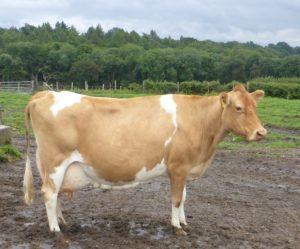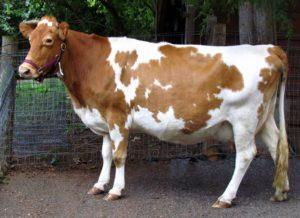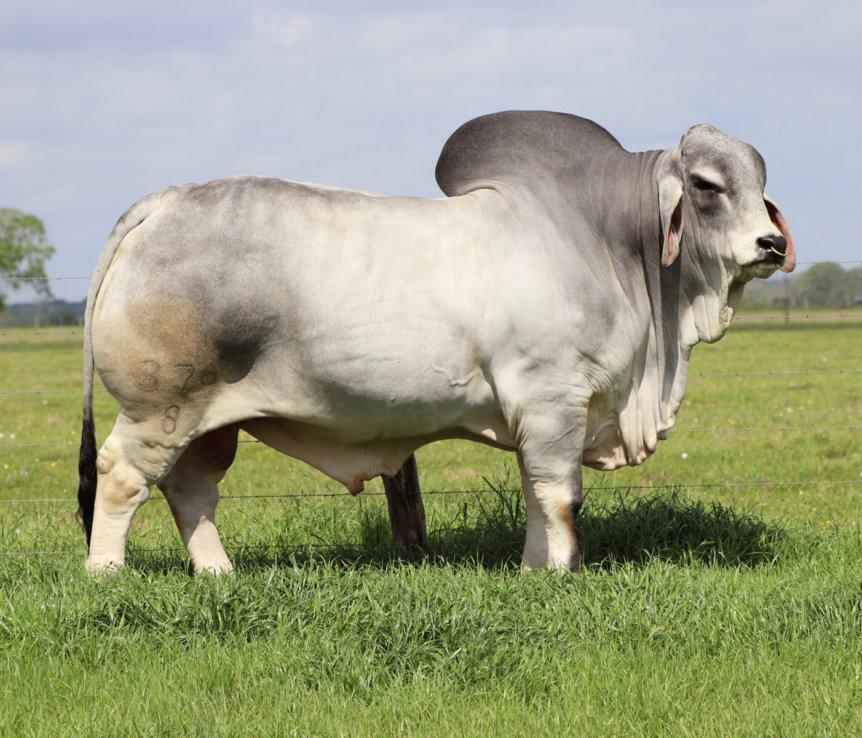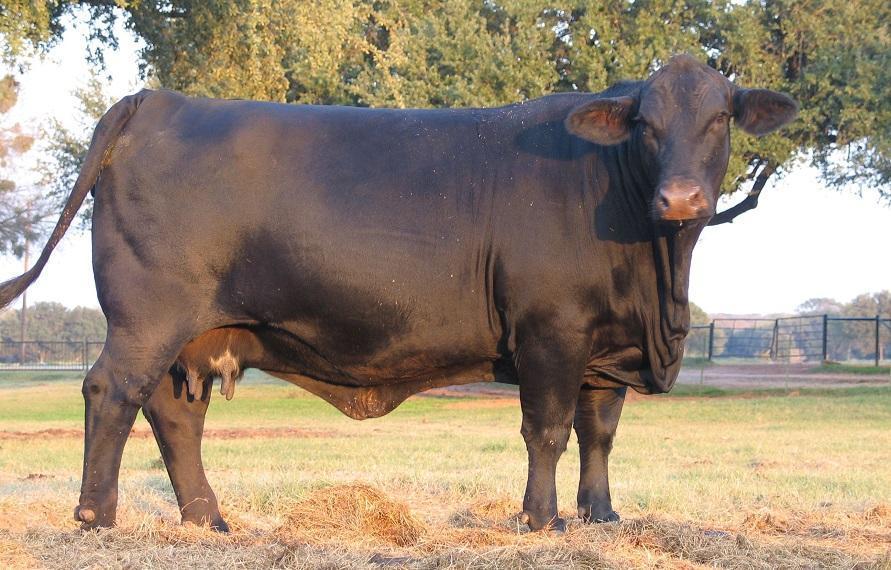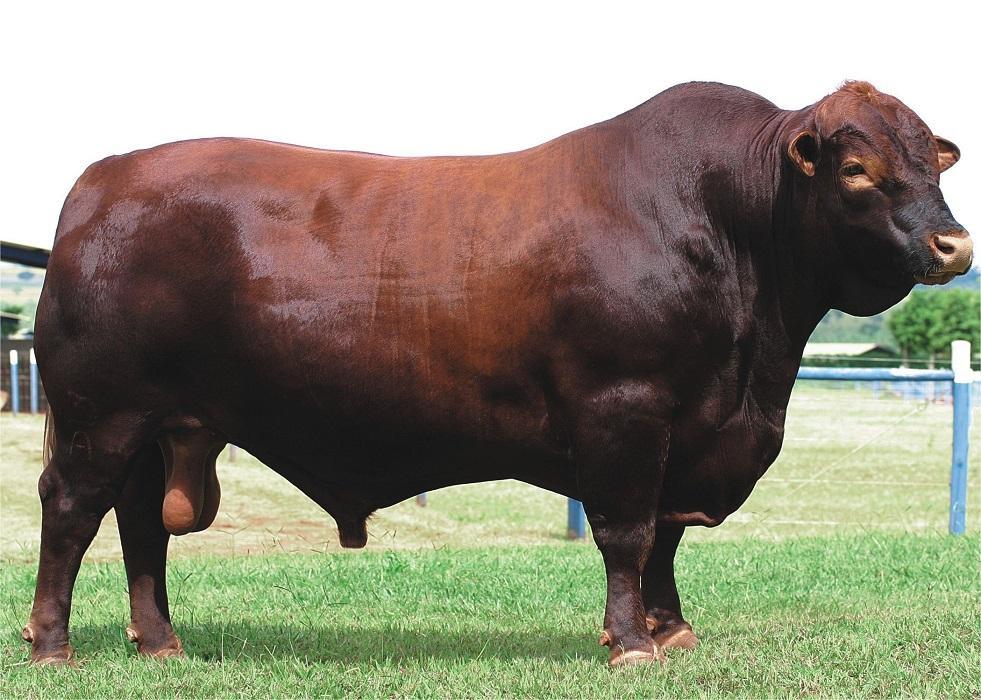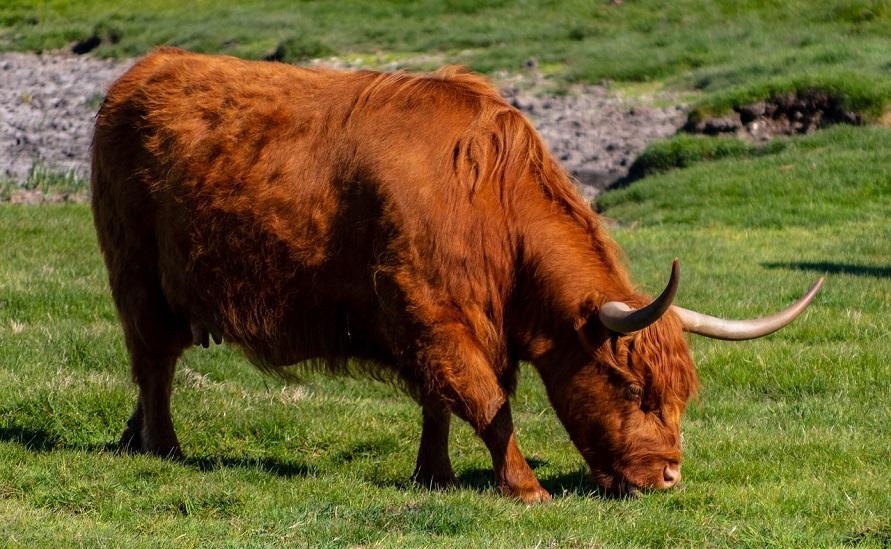Guernsey Cattle
The Guernsey cattle are a breed found worldwide bred primarily for dairy purposes. Its milk is unique due to its yellow color and high calcium, fat, and protein content. As its name suggests, this particular breed originates from the island of Guernsey in the Channel island archipelago.
| Physical Characteristics | They have a strong back with a broad loin. The rump is wide, and the udder is strong and well extended. |
| Temperament/Personality | Docile |
| Coat Color | Red or fawn, with pied patterns occasionally observed |
| Size | Medium |
| Weight | Male: 600 to 700 kg Female: 450 to 500 kg |
| Height | 54 in |
| Uses | Dairy |
| Diet | High-quality grain and hay |
| Lactation Period | 10 months |
| Gestation Period | 401 days |
| Lifespan | 10-12 years |
| Climate Tolerance | Adaptable to any climate |
| Price | $2,000 and $5,000 |
| Country of Origin | Guernsey, Channel Islands |
| Standard and Qualification Information | American Guernsey Association, English Guernsey Cattle Society, The World Guernsey Cattle Federation |
History and Development
While the exact origins of the Guernsey cattle remain unknown, the first documentation of the breed dates back to the 19th century. The breed has a mixed lineage deriving its ancestry mainly from the brindled varieties from Normandy and the wheaten ones from Brittany. The Dutch cattle breeds of the 18th century may have also influenced the Guernsey cattle’s development.
Further French imports to Guernsey were banned in 1819. However, British imports continued till 1877. During World War II, farmers bred these cattle with the Alderney cattle.
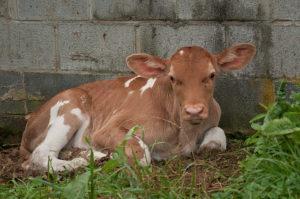
The cattle (and its semen) gave a significant economic boost to the island. The cattle were exported to the US from the early 20th century onwards. However, the global population is currently a bit low, with only 2500 cattle registered annually by the various organizations and an overall population of 10,000. As a result the American Livestock Breeds Conservancy have placed it on watchlist.
Milk Production
The yellowish tinge of the milk of the Guernsey cattle comes from the presence of β-carotene, a reddish-orange provitamin found in Vitamin A. There is a high level of butterfat (5%) and a high protein level (3.7%). On an annual basis, a Guernsey cow produces 6000 liters of milk.
Meat Production

While these cattle tend to be bred for their milk products, sometimes certain cattle are removed from the herd at around 6-8 years of age. These specimens are processed for meat and marketed explicitly as beef.
Interesting Facts
- It is one of the three Channel Island cattle breeds – the other two being the now extinct Alderney and Jersey cattle.

